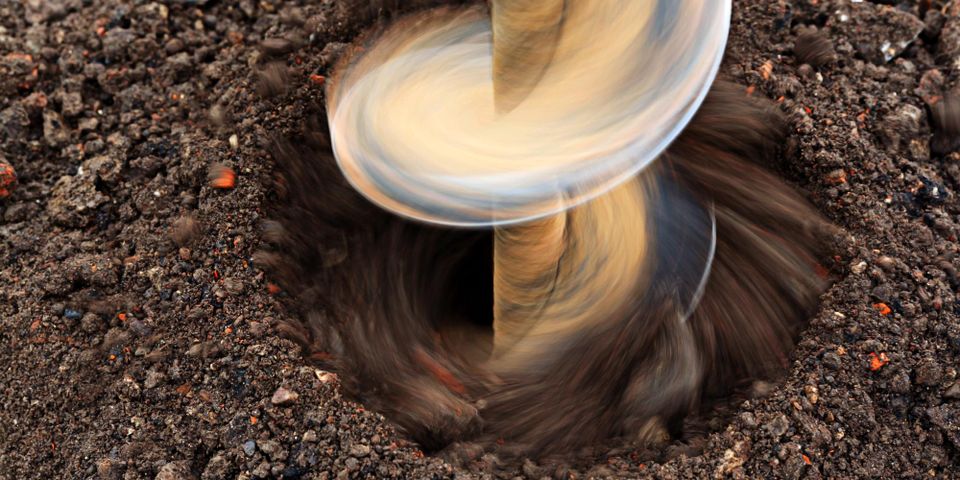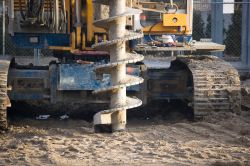A Guide to Solid Stem & Hollow Stem Augers

Geoscientists often employ augers to dig holes for their projects. By advancing the tool into the ground, professionals can perform tasks such as groundwater sampling and well drilling. Among the most common models are solid stem and hollow stem, both of which serve distinct purposes. Here’s what you should know about these auger drilling devices.
Solid Stem Auger
Geotechnical drilling contractors use solid stem augers to drill into clay-rich soil quickly. The device features a solid shaft connected to a claw bit, which aggressively cuts through the soil as it rotates into the surface. The auger features a continuous helix coil that displaces the soil upward as the drill moves further into the ground. That material can then be analyzed as needed, depending on the scope of the project.
This tool is useful in areas where the soil is tight and abundant as opposed to material that is loose or at risk of collapsing. Using extra auger pieces connected with couplings, the auger can produce holes that extend up to 400 feet depending on the soil’s consistency, with widths of up to two feet. This auger drilling method is particularly useful for soil sampling and is often used in construction, mining, and geotechnical industries.
Hollow Stem Auger
 The concept behind a hollow stem auger is similar, except its shaft is hollow. This central stem behaves much like a casing by preventing the sides of the drilled hole from collapsing inward. Professionals can then use the hollow space to retrieve soil or groundwater samples or to install a water well.
The concept behind a hollow stem auger is similar, except its shaft is hollow. This central stem behaves much like a casing by preventing the sides of the drilled hole from collapsing inward. Professionals can then use the hollow space to retrieve soil or groundwater samples or to install a water well.
This auger drilling device is best for unconsolidated, loose soils that contain more sand than clay and that are more easily disturbed and at risk of caving. Since moisture intrusion is a risk in this type of sand, flex plugs are often used to prevent water from entering the hollow space and interfering with the sampling process. However, it’s not suitable to feed into the more stable ground, such as surfaces that may have stones or rocks embedded inside. It’s capable of drilling up to 150 feet.
Specializing in geotechnical drilling, the team at GeoTek Alaska is committed to completing your project promptly and professionally. Based in Anchorage, they use innovative auger drilling tools for a variety of purposes, including groundwater sampling. They can also use penetrative radars to detect pollutants, and proudly utilize Geoprobe® technology to inspect soil without the risk of contamination. Visit them online to find out more about these services, or call (907) 569-5900 to speak with a representative.
About the Business
(6 reviews)
Have a question? Ask the experts!
Send your question

